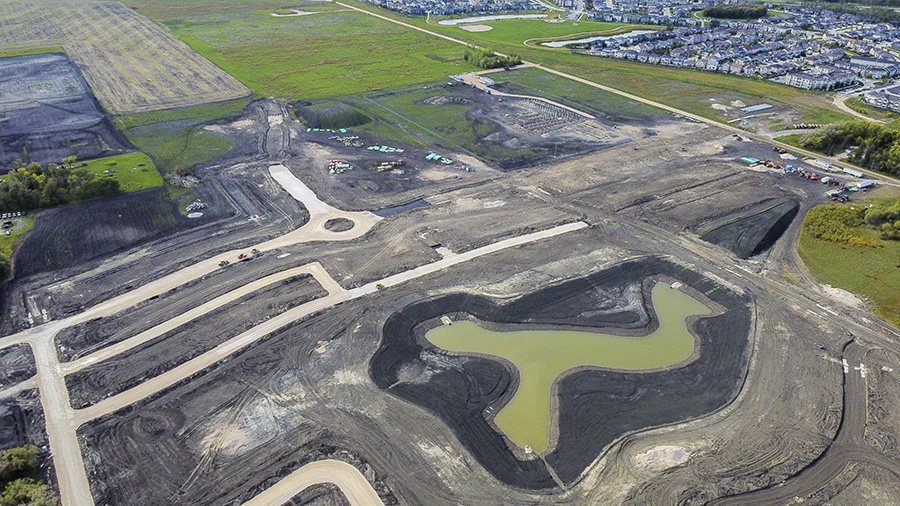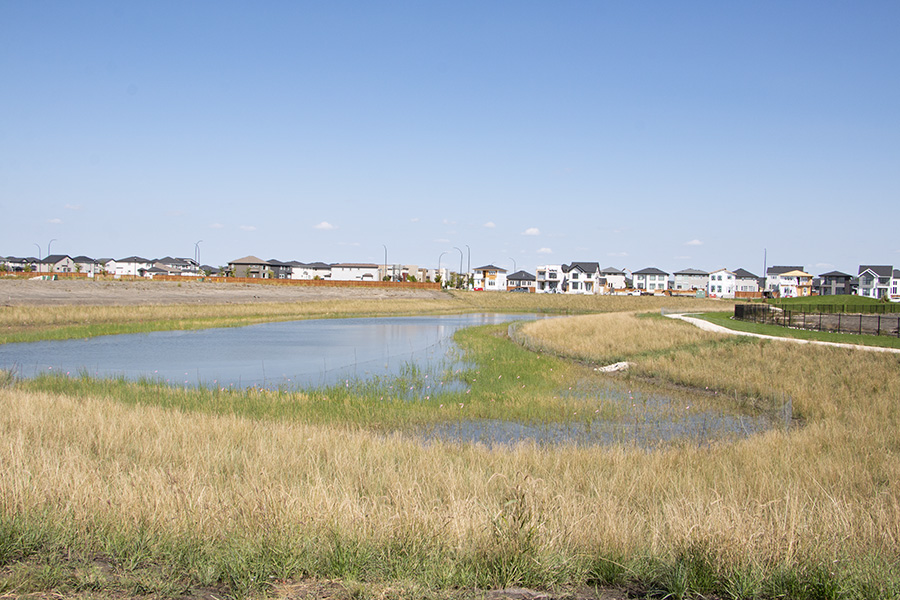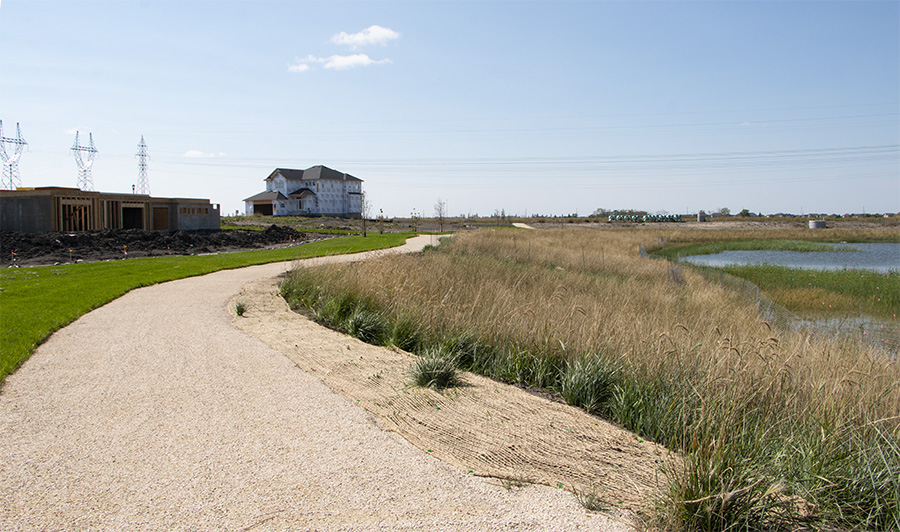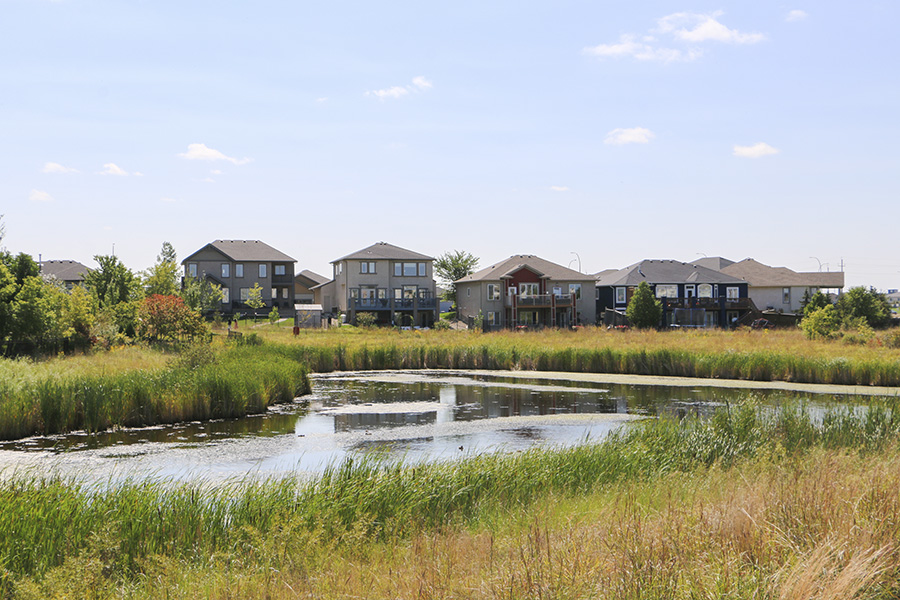Naturalized wetlands have become key features in the creation of our Qualico communities. Wetland construction is a detailed and timely process; it takes multiple phases or stages that progress over a number of years in order for a wetland to reach full maturity. However, once completely established, a naturalized wetland provides many benefits to a community such as helping to clean the watershed, providing valuable habitat for local wildlife and plant species, and offering a place of relaxation and recreation for residents and visitors alike.
Take a look below to see how it all begins (and grows!)

A two-month-old naturalized wetland in Bison Run is taking shape!
The wetland depicted above is two months old and the land has been graded or contoured into a series of levels. In this photo, the distinct elevation tiers or ‘shelves’ are obvious as the water level is still very low and remains below the topsoil line. The next step involves seeding the soil in the following spring, once it is about 1-year old.

A 2-year-old naturalized wetland in Phase 9A of Sage Creek begins to grow.
This is a 2-year-old wetland. Vegetation mats have been installed over the seed to help protect them from erosion and establish successfully. At this stage, as the water levels rise, the lower aquatic plants like bulrushes and sedges begin to grow along the shoreline. Native grasses that are tolerant to fluctuating water levels also begin to establish on the lower banks. Ducks and other small wildlife can now be seen on the water, followed by larger birds such as herons and pelicans.

Lots for homes that surround the naturalized wetland have been divided adjacent to the park. Fencing is installed and sod is planted at the rear of the lots. Native grasses bordering a constructed pathway are beginning to take-hold. Park markers, trees and benches have also been added along the trail network.

An established naturalized wetland of 15 years in Phase 1 of Sage Creek – SUCCESS-ion!
Succession has been fully established in this 15-year-old naturalized wetland – meaning native grasses and shrubs (including upland species) are now sprouting and growing naturally. Commonly occurring species include willows (along the banks), as well as maples, dogwoods and viburnum along the trails. Additionally, various native prairie flowers have begun to appear within the native grasses.
Many species of songbirds (alongside the owls, herons and pelicans) can be seen (and heard!) in the area. Smaller mammals such as foxes and hares now call this mature habitat, home – as do fish, frogs and turtles and many kinds of beneficial insects like dragonflies, butterflies and bees.
These carefully created naturalized wetlands are well worth the wait! Keep in mind that plants will evolve over time and what we plant now may not look the same in 30 years. What’s important is that these landscapes make our neighbourhoods healthier by serving a number of important ecological functions.
Learn more about the benefits of naturalized wetlands
here.